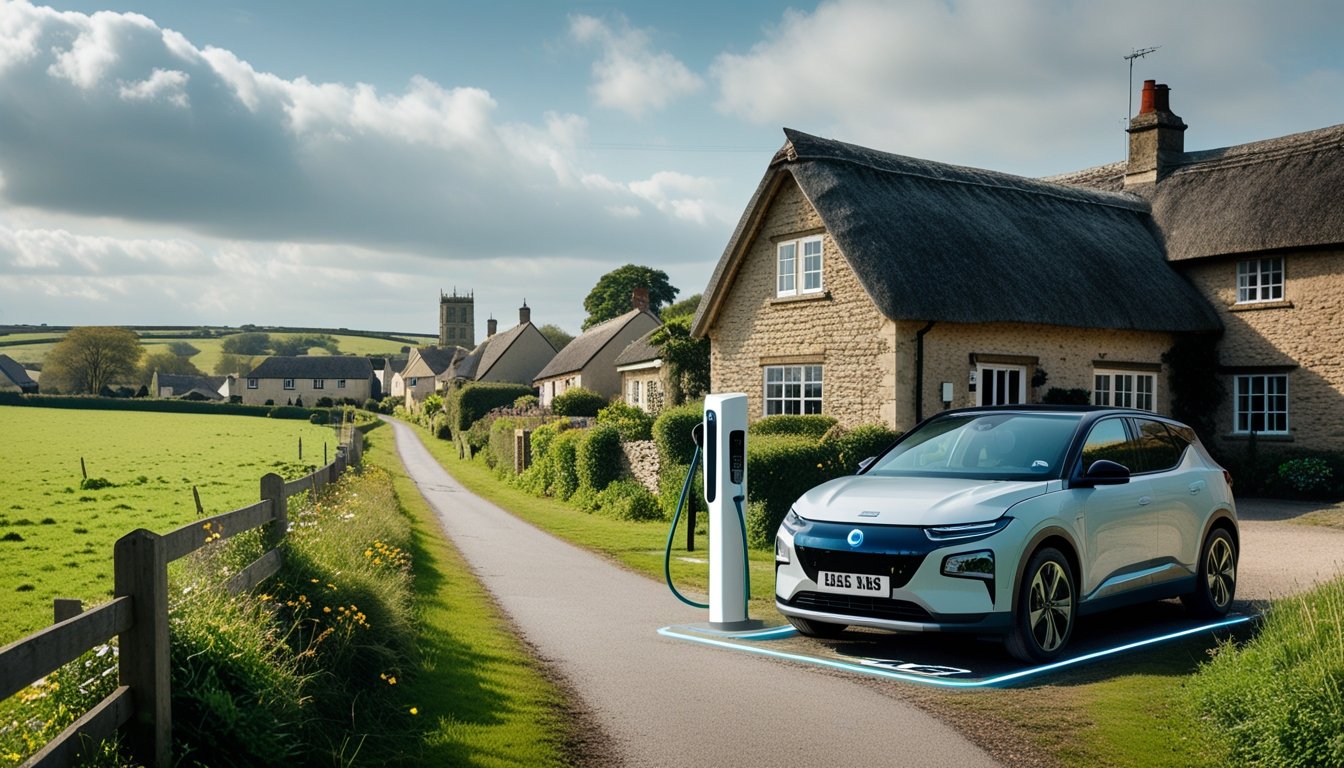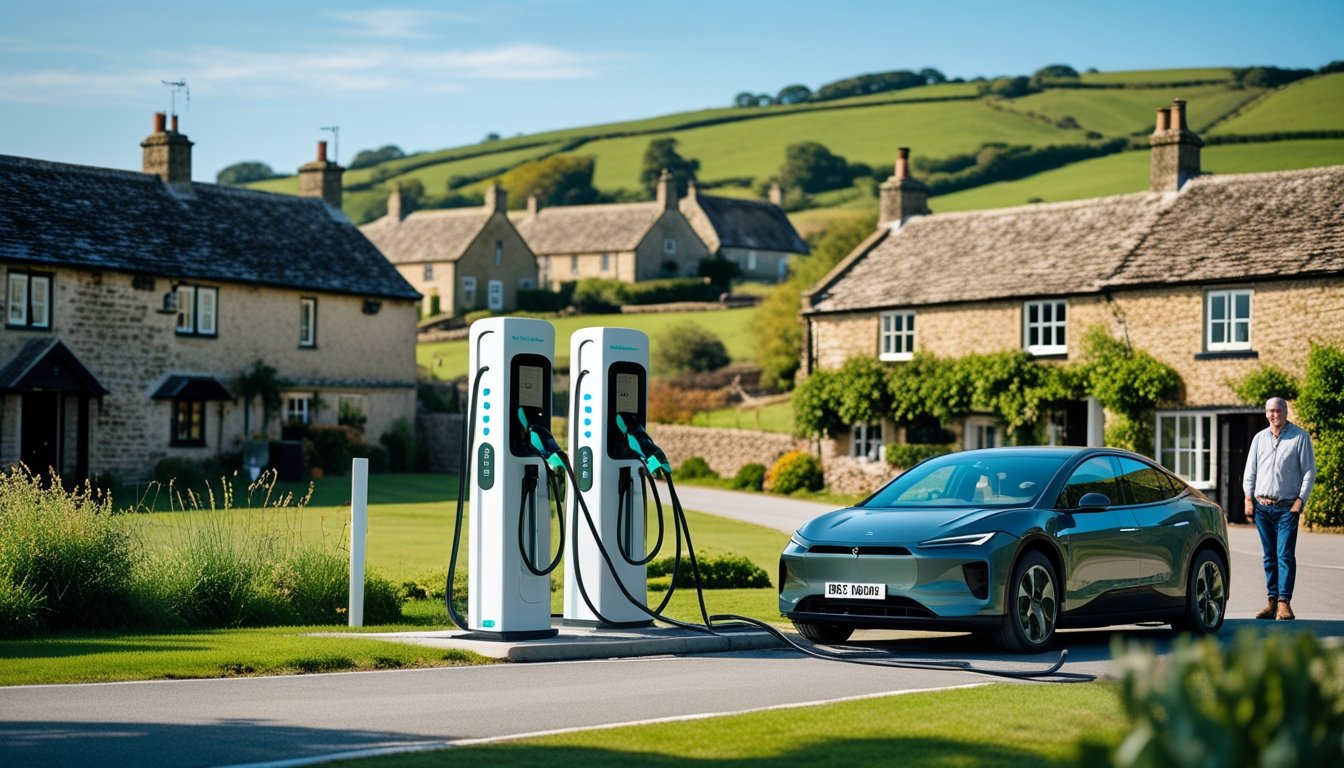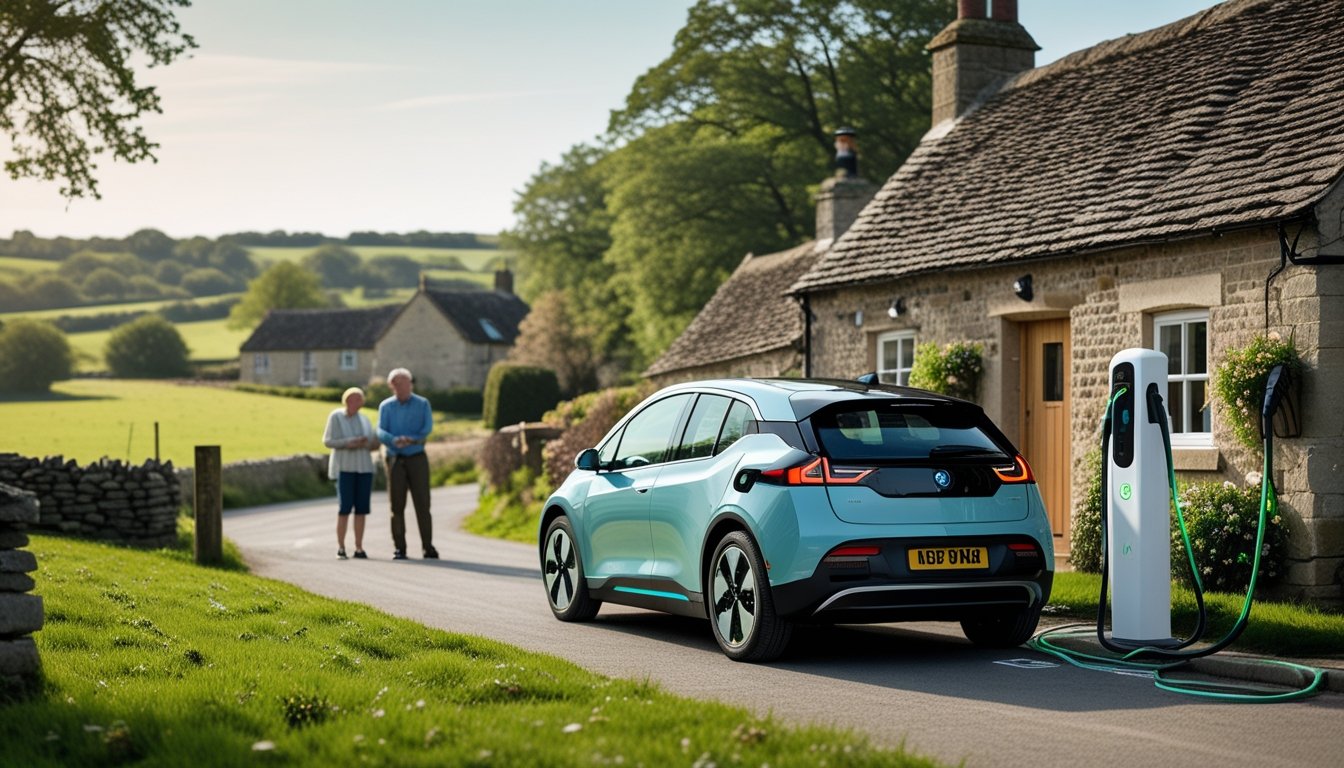Late updated: 02 Aug 2025 10:08
Written by: Oliver Bennett
Exploring Electric Vehicles For Rural UK Villages: A Path to Sustainable Transport Solutions
Exploring the potential of electric vehicles (EVs) for rural UK villages is an exciting opportunity as we strive towards a more sustainable future. While urban areas have seen swift advancements in EV adoption, rural communities have faced unique challenges such as limited charging infrastructure and longer travel distances. EVs offer a transformative potential for these areas by providing efficient, eco-friendly transport solutions that align with the UK's environmental goals.

Electric vehicles can play a critical role in transforming rural UK transport, providing sustainable and accessible solutions for countryside travel. These vehicles offer cost savings for residents and opportunities for local economies focused on renewable energy sources. Addressing infrastructure limitations is key, and there's a growing push to expand charging networks in rural regions to ensure these communities are not left behind in the green transition.
As we explore the challenges and benefits of adopting EVs in rural contexts, it becomes clear that collaboration between government, local authorities, and communities is paramount. By examining the current state of EV infrastructure and discussing potential solutions, we aim to illuminate the path forward for rural villages embracing this automotive revolution.
Key Takeaways
- EVs offer sustainable transport solutions for rural UK areas.
- Infrastructure development is crucial for successful EV adoption.
- Collaborative efforts can bridge gaps and enable rural EV success.
Electric Vehicles and Rural Transport Challenges
In rural UK villages, the integration of electric vehicles presents both opportunities and hurdles. These challenges involve examining local mobility needs, developing solutions, and counteracting social isolation.
Assessing Rural Mobility Needs
Understanding the unique mobility patterns in rural areas is essential for effective transport solutions. Rural mobility often involves longer travel distances for basic amenities, which contrasts with urban settings where services are typically closer.
Many rural regions face a lack of public transport. Roads in these areas can also be less maintained compared to urban counterparts. These factors influence residents' transport choices, making it crucial for us to focus on reliable alternatives like electric vehicles.
Our goal should be to identify specific needs and create tailored transport solutions. This includes addressing common issues such as the scarcity of charging infrastructure and the importance of reliable access to various destinations. By focusing on these needs, electric vehicle adoption can be encouraged and supported.
Transport Solutions for UK Villages
Electric vehicles hold potential as a key part of transport decarbonisation strategies. For rural UK villages, it's critical to implement appropriate transport solutions that support this transition.
Installing more charging points is vital. Ensuring that electric vehicles are a feasible option for residents helps create a sustainable transport future. We should consider alternative energy sources for charging points, like solar or wind, to enhance sustainability.
Community transportation initiatives, such as car-sharing schemes using electric vehicles, could alleviate some transport challenges. These schemes can reduce costs and provide access for those without private vehicles. Effective coordination between governmental bodies, like the Department for Transport, and local communities can drive these projects' success.
Addressing Social Isolation in Rural Communities
Rural communities often grapple with social isolation, amplified by limited access to transport. This isolation affects community ties and individuals' well-being. With electric vehicles, we can tackle these concerns by enhancing connectedness.
Improved transport options facilitate not only mobility but also social interaction. People can attend social and cultural events more easily, thus strengthening community bonds.
We aim to support projects fostering social inclusion. Affordable transport solutions should be prioritised, allowing everyone, regardless of socioeconomic status, to benefit. Ultimately, embracing electric vehicles could significantly mitigate social isolation, creating a more connected village atmosphere.
EV Charging Infrastructure and Decarbonisation

To facilitate the transition to electric vehicles in rural UK villages, enhancing EV charging infrastructure is vital. This will not only support decarbonisation efforts but also address hurdles unique to rural areas. Key areas to focus on include expanding charging points, advancing home charging technology, and leveraging government funding and policy initiatives.
Expanding Charging Points in Rural Areas
In rural regions, the availability of EV charging points is notably less than in urban areas. Many villages lack the dense infrastructure needed. This discrepancy can hinder the convenience and feasibility of owning an EV for rural residents.
Charge My Street, for example, works to install charging points throughout northern England, using community investments to build accessible infrastructure. This not only aids individual EV owners but also strengthens public transport and active travel infrastructure by encouraging cycling and walking through integrated planning.
Home Charging and Technology Advancements
Home charging remains a cornerstone of EV adoption, particularly in sparsely populated areas. Single-phase electricity networks found in many rural locations pose challenges for installing powerful home chargers. Despite this, advancements in technology promise to ease these constraints.
Smart grid technology, designed to manage electricity demand efficiently, can facilitate sustainable home charging solutions. Innovations like these decrease reliance on public charging stations and can make electric vehicle charging more accessible as part of everyday life in rural settings.
Government Funding and Policy Initiatives
Effective government policies and funding sources are indispensable for supporting EV infrastructure expansion. The Rural Mobility Fund and initiatives like the Local EV Infrastructure Fund (LEVI) provide vital financial backing. These funds help local authorities work with the private sector to develop long-term charging solutions tailored to rural needs.
Moreover, policy frameworks emphasising active travel options—such as cycling and walking paths—can complement these efforts, offering diverse transport alternatives and reducing carbon footprints further. Encouraging regional cooperation can amplify these benefits, facilitating the rapid spread of EV-friendly infrastructures throughout rural UK areas.
Frequently Asked Questions

Exploring the intricacies of electric vehicles (EVs) for rural UK villages involves understanding charging infrastructure, weather performance, cost considerations, incentives, maintenance challenges, and distance capabilities.
What are the essential considerations for charging infrastructure in rural UK villages?
Adequate charging infrastructure is vital for EV adoption in rural areas. Due to sparse population density, installing enough charging points can be a challenge. Collaboration between government bodies and private entities is essential to ensure that convenient and accessible charging facilities are available to meet the needs of rural residents.
How do electric vehicles perform in cold weather conditions typical of the UK countryside?
Cold weather can affect EV performance, particularly the battery's efficiency and range. In low temperatures, EVs might require more energy for heating, which can reduce the vehicle’s range. However, advancements in battery technology are improving cold-weather performance, ensuring that EVs remain reliable even during harsh UK winters.
What incentives are available for rural residents to switch to electric vehicles?
Various government incentives aim to encourage the switch to electric vehicles. These include grants for vehicle purchase, tax relief, and funding for home charging units. Additionally, specific programmes may target rural communities, making the initial transition to EVs more financially manageable for residents.
How does the cost of operating an electric vehicle compare to petrol or diesel cars in a rural setting?
Operating costs for EVs are generally lower than petrol or diesel cars. Electric vehicles have fewer moving parts, reducing maintenance costs. Electricity costs can be more stable compared to fluctuating fuel prices. Despite potentially higher upfront purchase costs, EVs can offer long-term savings, especially with available incentives.
What are the challenges of servicing and maintaining electric vehicles in remote areas?
In rural areas, access to qualified service professionals for EV maintenance can be limited. This scarcity can lead to longer wait times and potentially higher service costs. Expanding technician training and increasing the number of service centres are crucial steps in addressing these challenges and ensuring reliable maintenance support.
What developments are being made to extend the range of electric vehicles suitable for rural distances?
Ongoing advancements in battery technology are crucial for extending EV range. Manufacturers are investing in research to increase efficiency and capacity. As technology improves, newer models can travel longer distances on a single charge, which is essential for covering the greater distances between locations typically found in rural settings.
